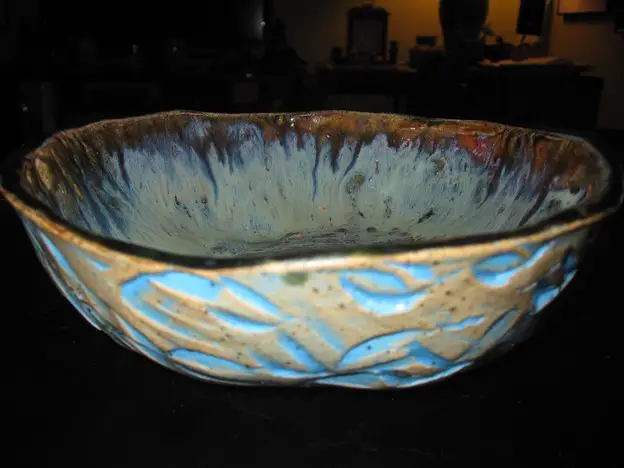Are you looking for the best ways to add texture to your home oven pottery? There are several texturing options available online or at your local pottery mart. While you can surely experiment with household items available around you, there are several beautiful choices you could opt for. Whether you wish to use slip for relief texture or plan on investing in textured rollers, the choices you have are endless. So, let us take a look at the ways that you can add texture to your home oven pottery!
Resist Texture Printing
If your clay piece has reached the leather-hard stage, resist texture printing is the perfect way to go about it. First, create your desired patterns and cut them out on thick paper that doesn’t wear out easily in water. Next, lay over the patterns on the clay piece and gently press them so that it sticks to the surface. Now, slowly with the help of a soft-bristle brush, spread out the thick slip but do not mix any grog into it.
Next, allow the clay surface and the slip to equalize properly, and once you see that the sheen is lost, peel off the textured paper to see the pattern imprinted onto the clay.
Use Textured Rollers
Another great way to add texture to your home oven pottery is with the use of a roller or roulette that is circular in shape with patterns added all around. These rollers can be rolled on the clay surface to add continuous patterns such as polka dots, basket-weave patterns, and many more.
You can invest in various textured rollers depending on how you want the final product to look. Remember, even the most basic designs tend to look beautiful in repeated patterns laid across your clay slab. You can also combine different designs from multiple rollers to get something unique. The OwnMy Textured Wooden Hand Rollers are a great set to experiment with in terms of designs. These rollers are made of solid wood and can withstand long-term use on water-containing surfaces without deforming.

Opt For Textured Molds
You can either purchase a textured mold or create one yourself. In order to make one yourself, you simply have to pour some liquid plaster mixture into premade molds and remove them once they are semi-permanent and let them dry out completely before you start using them. These molds can be rolled onto the clay body, or the clay can be wrapped around these molds to create a texture both inside and outside.
Stamps Are A Great Option
Stamps are easy to work with and add some interesting textures and designs to your clay pieces. They even add some depth to the glaze, depending on how deep you imprint the design. You can carve stamps from blocks made of plaster or use leather-hard clay to create one. Make sure you bisque-fire them before using them as stamps to add texture.
You can also find wooden stamps to create textures. However, when using wooden options, do not forget to clean the stamps after use and ensure there is no moisture left on the stamps.
Alternative Ways To Add Texture To Your Home Oven Pottery
- You can press any type of found objects, like tree bark, leaves, rocks, seeds, etc., into the clay. In repeated patterns, these commonly found objects create textures just as beautiful as the ones you create from the textured objects you purchase. If you feel that the clay isn’t taking on the texture, try to re-knead it and make it softer.
- Another great way to add texture to the pottery is when you are wheel throwing. This technique is known as roulette. You can use any tool, like a carving tool or shaping tool, to create texture vertically, horizontally, zig-zag, or in any motion you desire.
- You can also use a small section of rope pushed against the clay piece to create textures in repeated patterns.
Conclusion
Always remember that your clay slab or pot won’t take up the texture, especially the pressed-on ones if the clay isn’t soft enough. But, you should also keep in mind not to make the clay too soft, or it can also cause the design to fade away after you have pressed it on. The key is to check the consistency and ensure that the clay isn’t too airy and light. With these ideas, you can add some beautiful designs to your home oven project.







